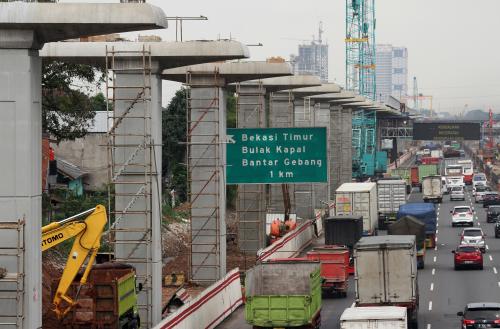Last week, the International Monetary Fund (IMF) released Nigeria’s 2018 Article IV consultation report highlighting the country’s exit from the recession that started in the first quarter of 2016 largely due to low oil prices. According to the report, the economy grew by 0.8 percent in 2017 with growth forecasted at 2.1 percent in 2018. Several other macroeconomic indicators improved as well, with inflation falling to 15.4 percent year-on-year and foreign exchange reserves hitting a four-year high.
As part of the report this year, the IMF summarizes trends in public investment in Nigeria, finding that public investment is lower and of worse quality than other emerging market economies. According to the authors, a large infrastructure gap is often a particular impediment to growth and narrowing it can raise GDP growth by three-fourths of a percent.
As Figure 1 shows, Nigeria spends less on capital expenditures than the median emerging economy and its stock of capital has consistently grown slower than the average for sub-Saharan Africa. This persistent slower growth has meant that Nigeria’s public capital stock per head is less than half the sub-Saharan African average, a situation that might constrain its recovery and slow economic diversification.
Figure 1
Similarly, Nigeria also has a lower efficiency for public investment spending. Efficiency gaps capture the difference in the potential and actual quantity and quality of infrastructure for a given level of public sector spending on infrastructure. As Figure 2 shows, Nigeria has large efficiency gaps in the quantity of infrastructure measured through levels of the physical capital of roads, public education, electricity production, health infrastructure, and access to treated water—falling well below the regional average. While Nigeria also performs poorly on the quality of infrastructure measured using a business survey measure from the World Economic Forum, the gap between Nigeria and the regional average is much smaller.
Figure 2
The report provides several recommendations to close the infrastructure gap through improved efficiency and increased spending. The report estimates that raising the quality of Nigeria’s regulatory practices to sub-Saharan African best practices would lead to an 8 percent reduction in the efficiency gap. It highlights several areas of the public investment process, such as procurement and multi-year budgeting, that could lead to improvements in efficiency. Increasing capital spending through better current expenditure management, particularly personnel costs, is also suggested.






Commentary
Figure of the week: Gaps in Nigeria’s public infrastructure
March 14, 2018